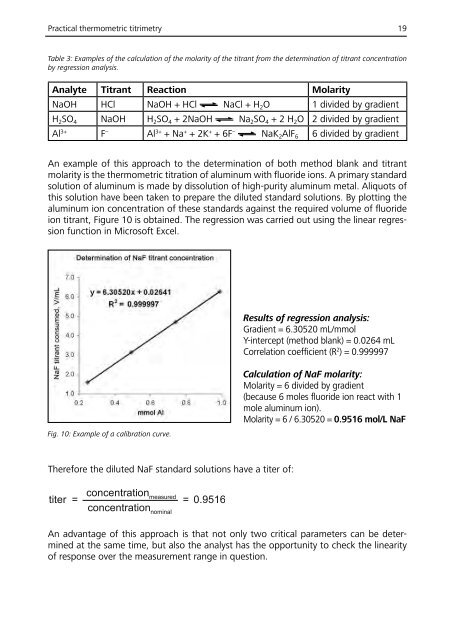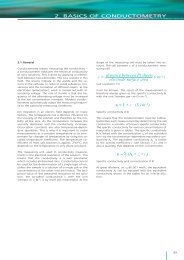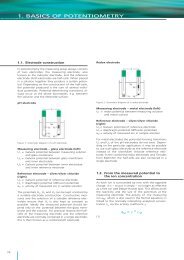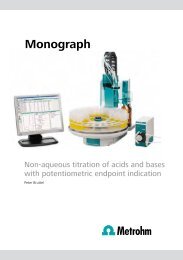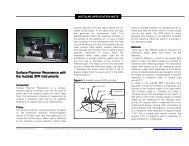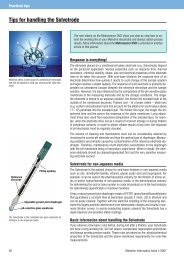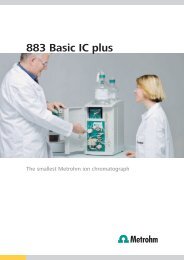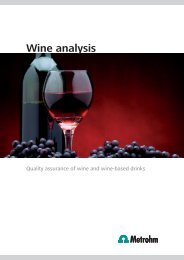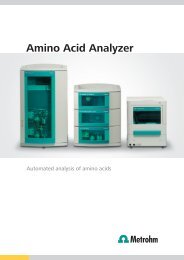Monograph - Metrohm
Monograph - Metrohm
Monograph - Metrohm
You also want an ePaper? Increase the reach of your titles
YUMPU automatically turns print PDFs into web optimized ePapers that Google loves.
Practical thermometric titrimetry 19<br />
Table 3: Examples of the calculation of the molarity of the titrant from the determination of titrant concentration<br />
by regression analysis.<br />
Analyte Titrant Reaction Molarity<br />
NaOH HCl NaOH + HCl NaCl + H 2 O 1 divided by gradient<br />
H 2 SO 4 NaOH H 2 SO 4 + 2NaOH Na 2 SO 4 + 2 H 2 O 2 divided by gradient<br />
Al 3+ F – Al 3+ + Na + + 2K + + 6F – NaK 2 AlF 6 6 divided by gradient<br />
An example of this approach to the determination of both method blank and titrant<br />
molarity is the thermometric titration of aluminum with fluoride ions. A primary standard<br />
solution of aluminum is made by dissolution of high-purity aluminum metal. Aliquots of<br />
this solution have been taken to prepare the diluted standard solutions. By plotting the<br />
aluminum ion concentration of these standards against the required volume of fluoride<br />
ion titrant, Figure 10 is obtained. The regression was carried out using the linear regression<br />
function in Microsoft Excel.<br />
Fig. 10: Example of a calibration curve.<br />
Results of regression analysis:<br />
Gradient = 6.30520 mL/mmol<br />
Y-intercept (method blank) = 0.0264 mL<br />
Correlation coefficient (R 2 ) = 0.999997<br />
Calculation of NaF molarity:<br />
Molarity = 6 divided by gradient<br />
(because 6 moles fluoride ion react with 1<br />
mole aluminum ion).<br />
Molarity = 6 / 6.30520 = 0.9516 mol/L NaF<br />
Therefore the diluted NaF standard solutions have a titer of:<br />
An advantage of this approach is that not only two critical parameters can be determined<br />
at the same time, but also the analyst has the opportunity to check the linearity<br />
of response over the measurement range in question.


